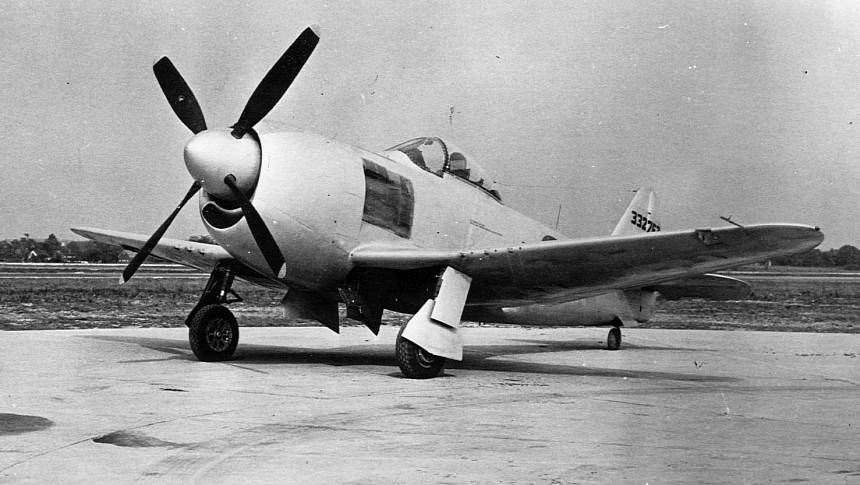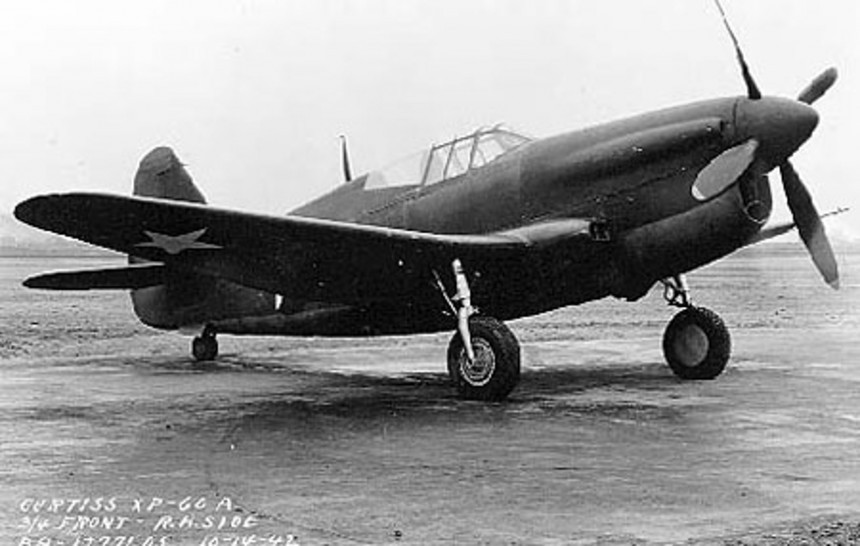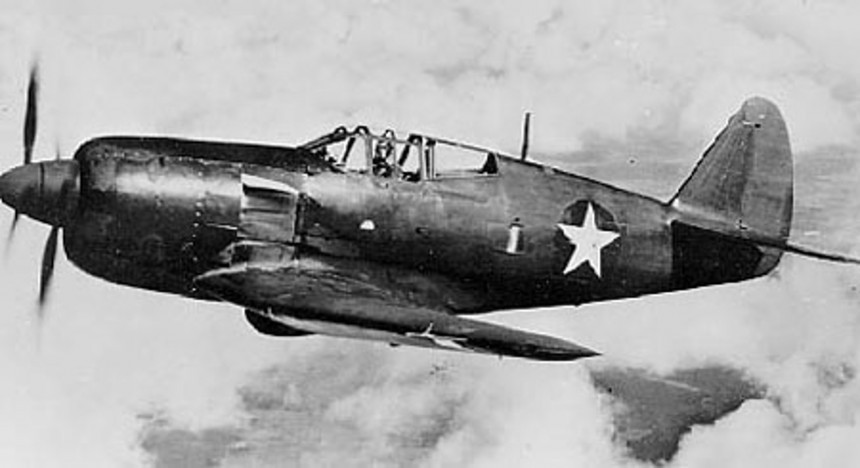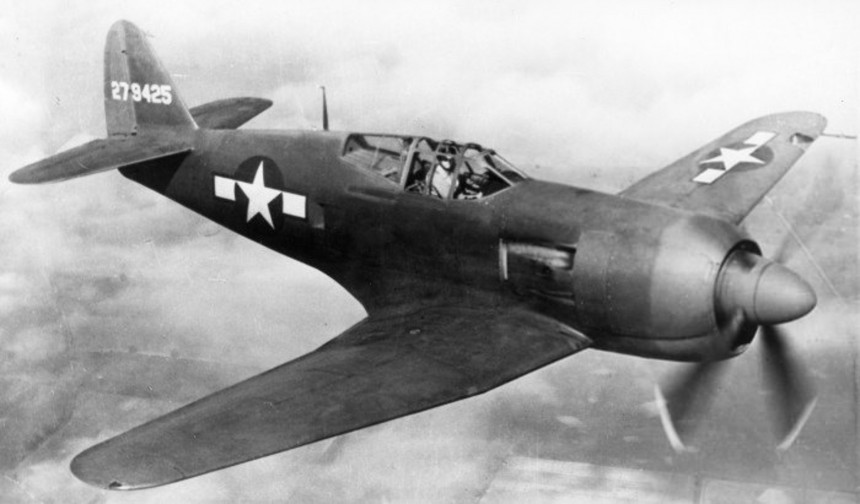If the North American P-51 Mustang was the LeBron James of World War II American fighters, you can think of the Curtiss P-40 Warhawk as almost like Carmello Anthony. Undoubtedly a lethal and capable dogfighter, but perenially in the shadow of more recognizable and more celebrated military aircraft. But it almost wasn't this way. Had the pages of history written even a slightly different story, the P-40's legacy would have lived on even longer through its planned replacement.
This is the story of the Curtiss P-60, a Warhawk's airframe given a liberal dose of upgrades and modifications to try and extend its service life indefinitely. Safe to say, things didn't even go remotely close to plans. But to understand the impetus behind the failed P-60, we must understand what life was like for a Curtiss-Wright engineer in the late 1930s. By 1939, the Curtiss Aeroplane and Motor Company of Buffalo, New York, had already long been absorbed along with Wright Aeronautical of Patterson, New Jersey, into the conglomerate we all know today as Curtiss-Wright.
The new company's first mono-wing fighter, the P-36 Hawk, never got up to much in U.S. Army Air Corps service apart from frantically scrambling to defend U.S. Navy personnel and civilians from attacks from Japanese aircraft during the attack on Pearl Harbor. But the Hawk's successor, the P-40 (Warhawk, Tomahawk, Kittyhawk), was the exact opposite. In service with the U.S., Great Britain, the Netherlands, China, Canada, Australia, Finland, Poland, and even the Soviet Union, the P-40, with its trademark Allison V-1710 V12 and six M2 Browning machine guns, gave Axis pilots hell over the skies of all of the war's major theaters.
Through countless battles early on in the war, including in service with the iconic Flying Tiger volunteer fighter squad against the Japanese, the P-40 proved to be a very capable, maneuverable, and reasonably fast fighter plane. But even before the war began, dictations declared that American aerospace contractors would continue to beat the drums of innovation until victory against perceived future foes was at hand.
This was why North American Aviation reached out to the British Royal Air Force in the late 1930s to provide the RAF with a fighter capable of meeting its strict performance requirements. With the P-40 only being in service for a year by 1939 and its production lines in Western New York now at full capacity, the atmosphere was right for North American to take full advantage of the situation. The results of this move would be none other than the P-51 Mustang.
But even if P-40s were leaving Curtiss-Wright factories like snow during a lake effect event, the company still had room to formulate a plan to eventually replace the P-40 outright with something more capable, more powerful, and flat-out better on paper. The first thing on the agenda at Curtiss-Wright in this regard was solving the shortcomings that'd come to define the P-40 in its combat operations. A stark lack of a dual-stage supercharger, a la the Mustang or the British Spitfire, was one Achilles heel that made the Warhawk not entirely up to par with the German Focke-Wulf Fw-190 or the Japanese Mitsubishi A6M Zero.
A general drive towards increasing the Warhawk's airframe high-altitude performance and stability during complicated maneuvers was also on the agenda at Curtiss-Wright. The first fruits of these efforts came in the form of a beefed-up Warhawk dubbed the Curtiss XP-46. With two 50-caliber machine guns in its nose and provisions for up to eight 30-caliber machine guns, four in each wing, the XP-46 was a step in the right direction. Even so, the same anemic Allison V-1710 that plagued Warhawks in service wouldn't cut it with the RAF anymore than it did in the P-40.
The RAF axed its planned production order for the XP-46 soon after its first flight in February 1941 and sent Curtiss-Wright back to the drawing board again. This time around, Curtiss-Write intended to modify the P-40's airframe to an even more extreme degree than the XP-46, including the addition of laminar flow wings for reduced drag and better speed/handling characteristics, similar to the ones employed on the P-51 Mustang. Initially, plans called for the new warbird to sport a Continental XI-1430 inverted V12 engine capable of producing 2,100 horsepower at full war-emergency power.
The XI-1430's unique inverted arrangement made it look more like a German engine than it did one from the Allies, as the Luftwaffe made frequent use of inverted Daimler-Benz and Junkers Jumo V12s in their aircraft during the war. However, changes to the design requirements requested by the USAAC and RAF soon caused plans to use the Continental engine to be scrapped after one prototype, dubbed the XP-53, had already been built. Soon, Curtiss-Wright opted to install a British-built Rolls-Royce Merlin V12 with a twin-stage, dual-speed supercharger on the next prototype, giving birth to the bespoke XP-60 line of Curtiss fighters.
Trials of the XP-60 airframe paired with an upgraded Allison V-1710 sporting a B-14 turbosupercharger were also conducted for a time with a single production example. Tentative future plans even called for a production variant sporting the Chrysler XIV-2220 inverted V16 engine with its innovative hemispherical combustion chamber. That's right, folks, an XP-60 variant very nearly flew using the world's first Chrysler HEMI engine. Ultimately, the engine that came to define the P-60 program was not a liquid-cooled V-engine of any kind but rather a radial engine.
The engine in question would be the genuinely legendary Pratt & Whitney R-2800 Double Wasp twin-row, 18-cylinder engine famous for its use in the Vought F4U Corsair, Grumman F6F Hellcat, Republic P-47 Thunderbolt, and approximately a few dozen other aircraft both military and civilian of the period. With in excess of 2,000 horsepower to work with and no complicated liquid-cooling to worry about, the Double Wasp made sense to Curtiss-Wright's engineers as a fitting engine for the P-60 program. Christened the XP-60C in this configuration, a set of two contra-rotating propellers was the design's biggest change besides the engine.
With its first flight less than a year after the XP-46 in September 1941, Curtiss-Wright had thrown everything, including the kitchen sink, at providing the U.S. and its allies with a suitable P-40 replacement. But it was all for nothing. Flight testing soon found the XP-60s laminar-flow wings were more prone to excess drag than the P-51 Mustang. Even if the XP-60C's flight characteristics were generally up to the mark in other areas, the proverbial hoard of Mustangs, Thunderbolts, P-38 Lightnings, and P-39 Airacobras entering service around the same time saw the P-60 platform's potential flight squadrons get taken up with other, arguably more capable aircraft.
Even so, work continued in Buffalo throughout the war in a frantic yet spirited effort to squeeze every last drop of capability out of the P-40's airframe. New variants like the Merlin 61-powered XP-60D and the bubble-canopied XP-60E continued to make developments using the airframes of previous prototypes as their basis. Out of six total XP-60 airframes, including the original XP-53 prototype, Curtiss managed to squeeze an impressive 12 variants, both built and not built, before the program finally called it quits in 1944.
At that time, XP-60s often found themselves in competition against fighter designs from other American companies at venues like the future Wright-Patterson Air Force Base, then known as Wright Field. Each time, the XP-60 failed to impress.With this in mind, all production orders for P-60 airframes, some totalling in the thousands of units, to be axed. The last known mention of a P-60 in any significant capacity was an attempt to field a single airframe in the 1947 running of the National Air Races, the precursor to the modern-day Reno Air Races, where the single entry crashed on a trial run before the race, and was never seen again.
By the start of the 1950s, Curtiss-Wright had sold the non-engine aspects of its business to North American Aviation, the very company whose P-51 routinely overshadowed Curtiss planes during World War II. It leaves us aviation enthusiasts today to wonder what could have been had proceedings gone just a little bit differently.
The new company's first mono-wing fighter, the P-36 Hawk, never got up to much in U.S. Army Air Corps service apart from frantically scrambling to defend U.S. Navy personnel and civilians from attacks from Japanese aircraft during the attack on Pearl Harbor. But the Hawk's successor, the P-40 (Warhawk, Tomahawk, Kittyhawk), was the exact opposite. In service with the U.S., Great Britain, the Netherlands, China, Canada, Australia, Finland, Poland, and even the Soviet Union, the P-40, with its trademark Allison V-1710 V12 and six M2 Browning machine guns, gave Axis pilots hell over the skies of all of the war's major theaters.
Through countless battles early on in the war, including in service with the iconic Flying Tiger volunteer fighter squad against the Japanese, the P-40 proved to be a very capable, maneuverable, and reasonably fast fighter plane. But even before the war began, dictations declared that American aerospace contractors would continue to beat the drums of innovation until victory against perceived future foes was at hand.
This was why North American Aviation reached out to the British Royal Air Force in the late 1930s to provide the RAF with a fighter capable of meeting its strict performance requirements. With the P-40 only being in service for a year by 1939 and its production lines in Western New York now at full capacity, the atmosphere was right for North American to take full advantage of the situation. The results of this move would be none other than the P-51 Mustang.
A general drive towards increasing the Warhawk's airframe high-altitude performance and stability during complicated maneuvers was also on the agenda at Curtiss-Wright. The first fruits of these efforts came in the form of a beefed-up Warhawk dubbed the Curtiss XP-46. With two 50-caliber machine guns in its nose and provisions for up to eight 30-caliber machine guns, four in each wing, the XP-46 was a step in the right direction. Even so, the same anemic Allison V-1710 that plagued Warhawks in service wouldn't cut it with the RAF anymore than it did in the P-40.
The RAF axed its planned production order for the XP-46 soon after its first flight in February 1941 and sent Curtiss-Wright back to the drawing board again. This time around, Curtiss-Write intended to modify the P-40's airframe to an even more extreme degree than the XP-46, including the addition of laminar flow wings for reduced drag and better speed/handling characteristics, similar to the ones employed on the P-51 Mustang. Initially, plans called for the new warbird to sport a Continental XI-1430 inverted V12 engine capable of producing 2,100 horsepower at full war-emergency power.
The XI-1430's unique inverted arrangement made it look more like a German engine than it did one from the Allies, as the Luftwaffe made frequent use of inverted Daimler-Benz and Junkers Jumo V12s in their aircraft during the war. However, changes to the design requirements requested by the USAAC and RAF soon caused plans to use the Continental engine to be scrapped after one prototype, dubbed the XP-53, had already been built. Soon, Curtiss-Wright opted to install a British-built Rolls-Royce Merlin V12 with a twin-stage, dual-speed supercharger on the next prototype, giving birth to the bespoke XP-60 line of Curtiss fighters.
The engine in question would be the genuinely legendary Pratt & Whitney R-2800 Double Wasp twin-row, 18-cylinder engine famous for its use in the Vought F4U Corsair, Grumman F6F Hellcat, Republic P-47 Thunderbolt, and approximately a few dozen other aircraft both military and civilian of the period. With in excess of 2,000 horsepower to work with and no complicated liquid-cooling to worry about, the Double Wasp made sense to Curtiss-Wright's engineers as a fitting engine for the P-60 program. Christened the XP-60C in this configuration, a set of two contra-rotating propellers was the design's biggest change besides the engine.
With its first flight less than a year after the XP-46 in September 1941, Curtiss-Wright had thrown everything, including the kitchen sink, at providing the U.S. and its allies with a suitable P-40 replacement. But it was all for nothing. Flight testing soon found the XP-60s laminar-flow wings were more prone to excess drag than the P-51 Mustang. Even if the XP-60C's flight characteristics were generally up to the mark in other areas, the proverbial hoard of Mustangs, Thunderbolts, P-38 Lightnings, and P-39 Airacobras entering service around the same time saw the P-60 platform's potential flight squadrons get taken up with other, arguably more capable aircraft.
Even so, work continued in Buffalo throughout the war in a frantic yet spirited effort to squeeze every last drop of capability out of the P-40's airframe. New variants like the Merlin 61-powered XP-60D and the bubble-canopied XP-60E continued to make developments using the airframes of previous prototypes as their basis. Out of six total XP-60 airframes, including the original XP-53 prototype, Curtiss managed to squeeze an impressive 12 variants, both built and not built, before the program finally called it quits in 1944.
By the start of the 1950s, Curtiss-Wright had sold the non-engine aspects of its business to North American Aviation, the very company whose P-51 routinely overshadowed Curtiss planes during World War II. It leaves us aviation enthusiasts today to wonder what could have been had proceedings gone just a little bit differently.



